Liking Lichen: 5 Common Lichens You Can Find in NYC
By Natural Areas Conservancy on May 03, 2024
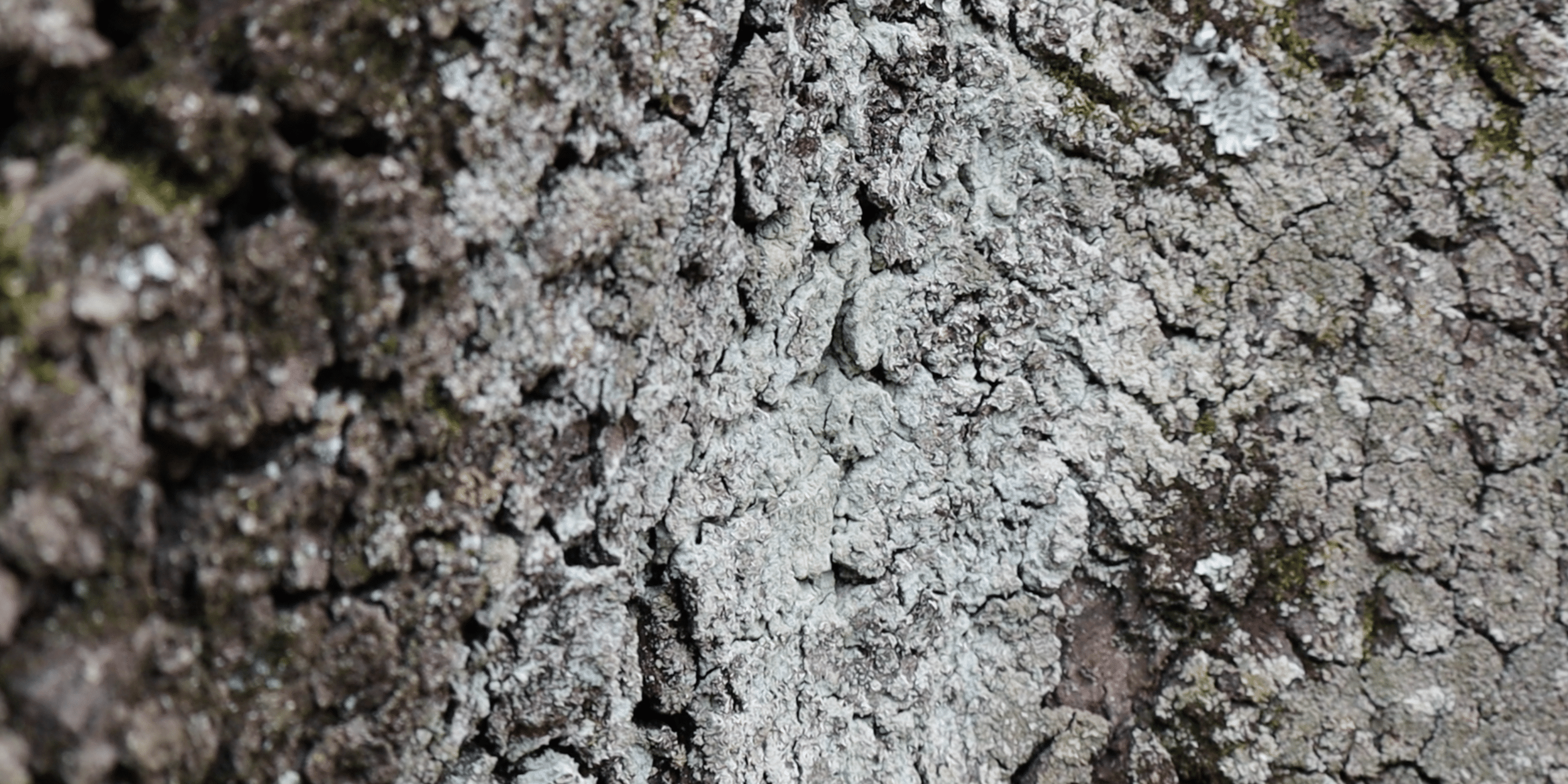
By Natural Areas Conservancy on May 03, 2024

You may not expect it, but New York City is a fantastic place to find lichen. There are over 10,000 species of lichen—and many can be found in the Big Apple. You can spot lichen not only on natural surfaces like rocks, trees, and logs but also on sidewalks, buildings, fences, benches—you name it! Walk outside, and you’ll likely encounter lichen with little effort.
Lichens are composite organisms. A composite organism is an organism that is made up of two or more independent organisms. Lichens are made up of algae or cyanobacteria that live among filaments of multiple fungi species in a mutually beneficial symbiotic relationship.
Lichen growth forms are based on the appearance of the thallus (the vegetative non-reproductive part of the lichen). In most species, this form is determined by the lichen’s fungal partner.
Lichens are often grouped by their growth form. There are a dozen of these forms however, the following three are considered the most common:
In March, I took a trip to Van Cortlandt Park to go on a lichen hunt—and I was amazed by what I found! Check out our Liking Lichen video series to see these lichens up close. Below, I outline features of each species in more detail and give tips on where you can spot them in NYC.
Found on these surfaces: Rocks, bark, and sometimes even brick!
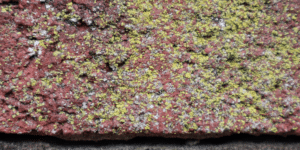
Candleflame lichen is recognizable by its lemon to mustard yellow color. Its thallus is foliose, which means it tightly attaches to its surface. The soredia (its reproductive propagule), is granular and found on margins between or at the end of lobes.
Found on these surfaces: Bark and urban area substrates such as metal fences, brick walls, and concrete.
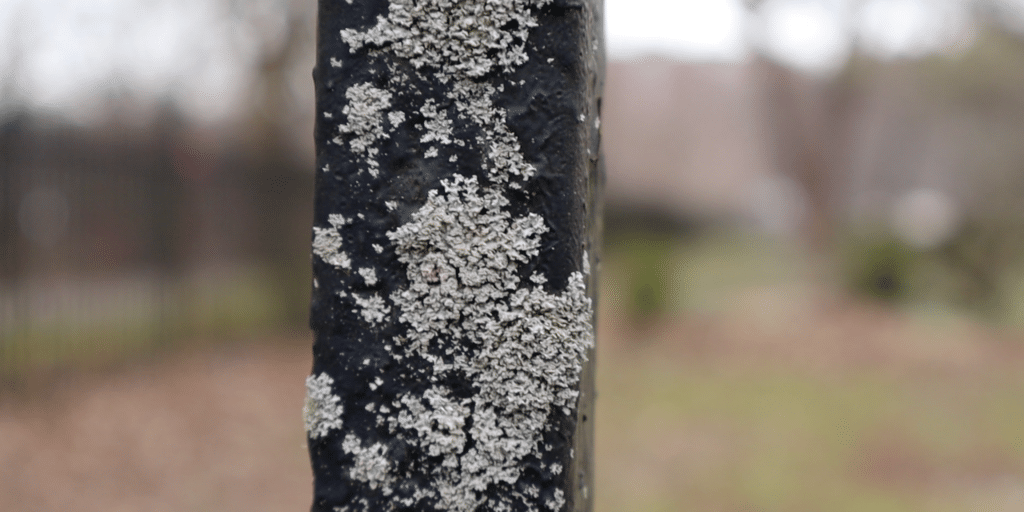
Mealy Rosette Lichen is very pollutant tolerant and frankly can thrive in New York City! Its thallus is foliose, pale gray in color, and with a white underside. Its soredia is dense and coarsely distributed, giving it a ruffled appearance.
Found on these surfaces: Primarily bark at the base of trees in shaded areas
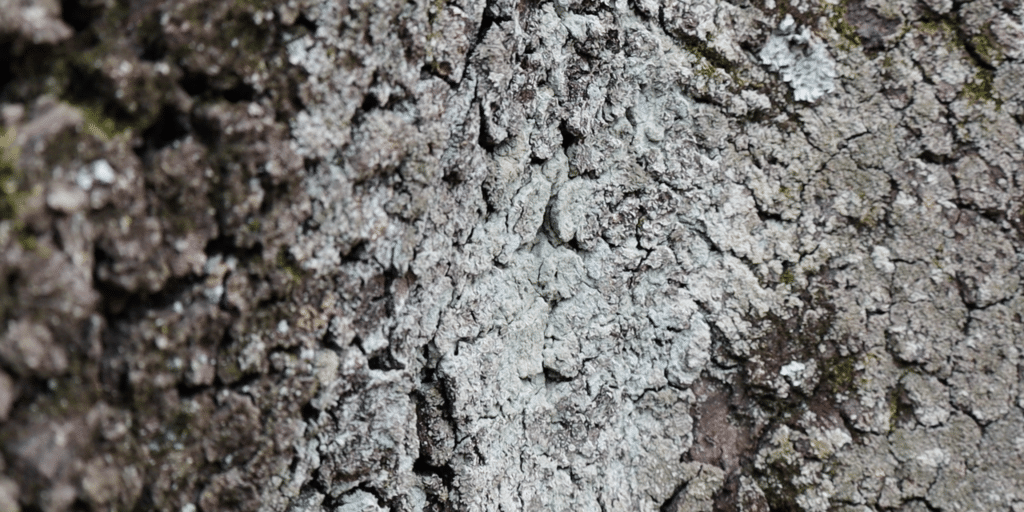
Fluffy dust lichen gets its name from its leprose thallus (a type of crustose thallus), which is powdery and granular, giving it a cottony or cob-webbed appearance. You’ll notice this lichen has a gradient of colors on its surface from greenish gray to bluish green. Fluffy dust lichen is the most abundant species of the dust lichen genus.
Found on these surfaces: Soil, and occasionally bark and wood
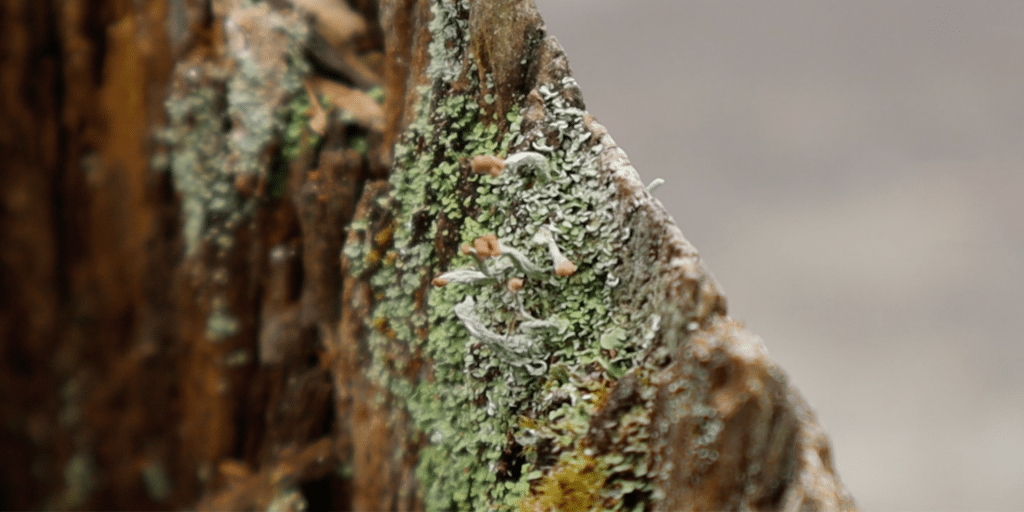
Turban cup lichen is particularly unique because its thallus is dimorphic, meaning it has two growth types. The primary one is foliose in appearance and appears gray-green in color. The secondary thallus supports the lichen’s fruiting structure, and is fruticose in appearance. You’ll notice its apothecia (small cup shaped structures on top of lichen) is pale brown in color.
Found on these surfaces: Bark, rarely rock
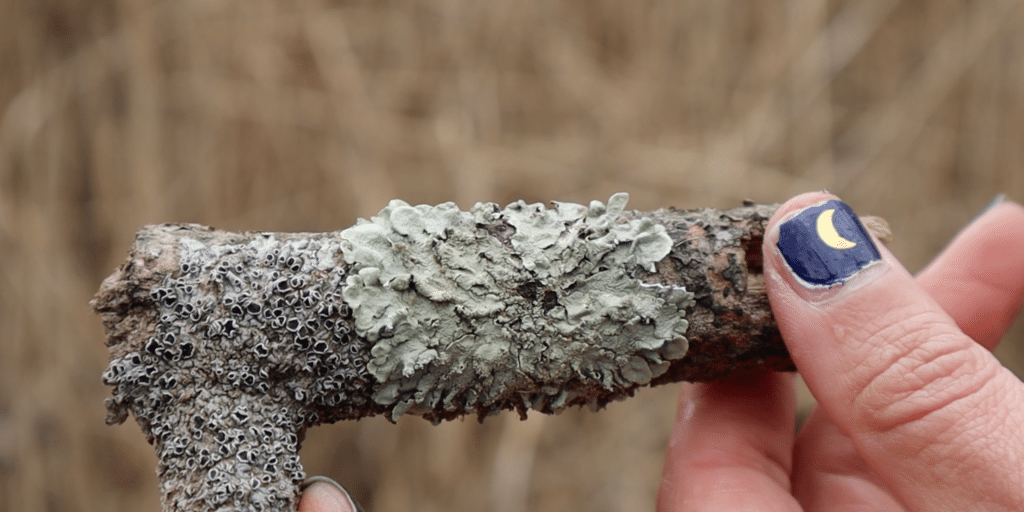
Step into a forest and common greenshield lichen might be the first lichen you spot! Its thallus is foilose, typically yellow-green in color, but distinctively yellow when it’s dry. Overtime, its lobes become folded and wrinkled with age.
We hope this guide provides you with a starting point to discover your local lichen in NYC! Remember that when exploring natural areas to leave the environment as you found it and to tread with a light footprint. To watch the full Liking Lichen series head to our Instagram reels. Be sure to give us a follow for more natural areas tips and resources!
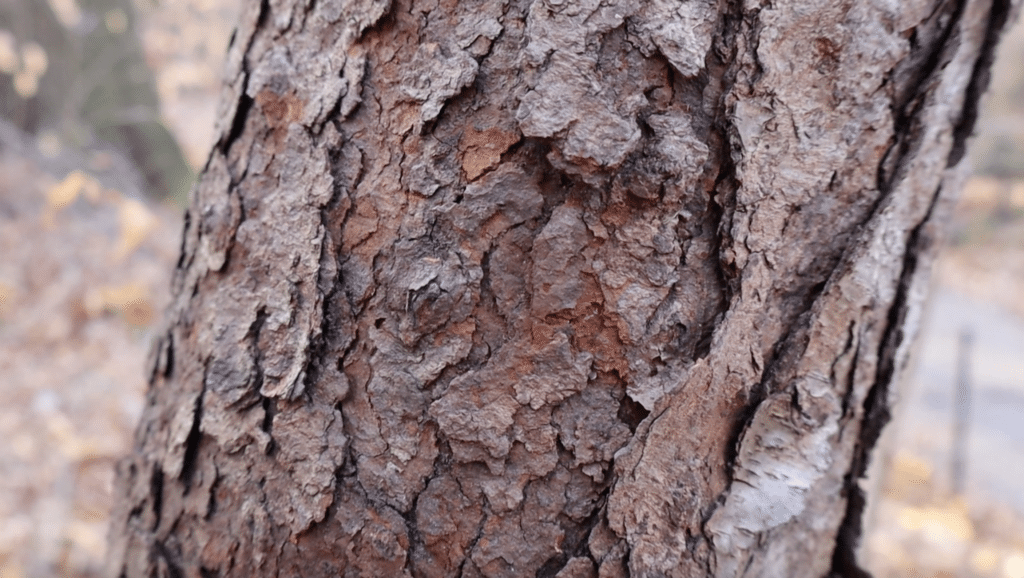
It’s winter in New York City, and now that leaves have fallen off trees, it can become harder to identify them. But don’t fear, their ba...
Read more